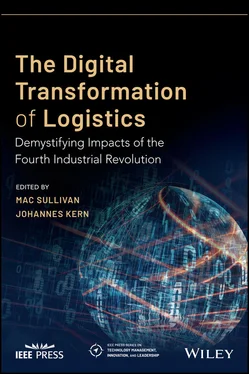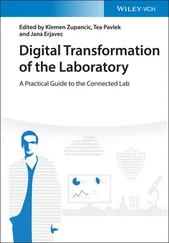71 The Economist (2012). A third industrial revolution. https://www.economist.com/special‐report/2012/04/21/a‐third‐industrial‐revolution(accessed 17 May 2020).
72 Thiesse, F., Wirth, M., Kemper, H.‐G. et al. (2015). Economic implications of additive manufacturing and the contribution of MIS. Business and Information Systems Engineering 57 (2): 139–148. https://doi.org/10.1007/s12599‐015‐0374‐4.
73 Tibbits, S. (2014). 4D printing: multi‐material shape change. Architectural Design 84 (1): 116–121. https://doi.org/10.1002/ad.1710.
74 UPS (2016). 3D printing: the next revolution in industrial manufacturing. https://www.ups.com/assets/resources/media/en_US/3D_Printing_executive_summary.pdf(accessed 17 May 2020).
75 Varotsis, A.B. (2020a). Introduction to FDM 3D printing, 3D hubs. https://www.3dhubs.com/knowledge‐base/introduction‐fdm‐3d‐printing/(accessed 17 May 2020).
76 Varotsis, A.B. (2020b). Introduction to SLA 3D printing, 3D hubs. https://www.3dhubs.com/knowledge‐base/introduction‐sla‐3d‐printing/(accessed 17 May 2020).
77 Varotsis, A.B. (2020c). Introduction to SLS 3D printing, 3D hubs. https://www.3dhubs.com/knowledge‐base/introduction‐sls‐3d‐printing/(accessed 17 May 2020).
78 Ventola, C.L. (2014). Medical applications for 3D printing: current and projected uses. P&T: A Peer‐Reviewed Journal for Formulary Management 39 (10): 704–711. https://pubmed.ncbi.nlm.nih.gov/25336867.
79 Verboeket, V. and Krikke, H. (2019). The disruptive impact of additive manufacturing on supply chains: a literature study, conceptual framework and research agenda. Computers in Industry 111: 91–107. https://doi.org/10.1016/j.compind.2019.07.003.
80 Vialva, T. (2019). The best 3D printed consumer products, 3D printing industry. https://3dprintingindustry.com/news/the‐best‐3d‐printed‐consumer‐products‐148352/(accessed 17 May 2020).
81 Walter, M., Holmström, J., Tuomi, H., Yrjölä, H. (2004). Rapid manufacturing and its impact on supply chain management. Proceedings of the Logistics Research Network Annual Conference, 9–10, Dublin, Ireland (9–10 September 2004).
82 Weller, C., Kleer, R., and Piller, F.T. (2015). Economic implications of 3D printing: market structure models in light of additive manufacturing revisited. International Journal of Production Economics 164: 43–56. https://doi.org/10.1016/j.ijpe.2015.02.020.
83 Wohlers, T.T. (2012). Wohlers Report 2012: Additive Manufacturing and 3D Printing State of the Industry: Annual Worldwide Progress Report. Wohlers Associates.
84 Wolff, P. and Kern, J. (2019). Materialise: teaching along the silk road. In: Management Practices in Asia, 203–215. Cham: Springer International Publishing https://doi.org/10.1007/978‐3‐030‐19662‐2_15.
85 Xponentialworks (2020). The next generation of generative design, corporate website. https://xponentialworks.com/the‐next‐generation‐of‐generative‐design/(accessed 17 May 2020).
1 1Original equipment manufacturer.
2 2Computer‐aided design.
3 3An alternative approach is specialized platforms such as Shapeways or Materialise (Wolff and Kern 2019) that offer “printing on demand” services to consumers (Rayna et al. 2015).
4 4A subject matter expert in a study by Mellor, Hao, and Zhang relativizes this, suggesting that “in terms of material usage … particularly with the metals it's very good but you have to go through a high energy process of turning it into powder in the first place, do you really gain a benefit there? It's marginal to be fair. The actual machines are they really efficient at building stuff now? No … In terms of efficiency of use of energy they are not very good at all (Mellor et al. 2014).”
5 5For an overview about the main services offered by 3D printing platforms cf. (Rayna et al. 2015).
6 6She suggests that this could be overcome by regulating software instead of physical objects. As AM machines manufacture objects according to specifications provided in a design plan, product safety could be addressed by controlling the sharing of created plans and preventing unsafe ones from being distributed or sold (Neely 2016).
7 7The seven categories are photopolymerization (including the technologies VAT, SLA, DLP, CDLP), powder bed fusion (DMLS, SLS, SLM, MJF, EBM), material extrusion (FDM), material jetting (MJ, NPJ, DOD), binder jetting (BJ), sheet lamination (LOM, SL), and directed energy deposition (DED, LENS, EBAM) (Wohlers 2012; Dassault Systèmes 2020).
8 8Physical and mechanical properties differ with the part orientation.
9 9Gartner explains all phases as follows. Innovation Trigger: A potential technology breakthrough kicks things off. Early proof‐of‐concept stories and media interest trigger significant publicity. Often no usable products exist and commercial viability is unproven. Peak of Inflated Expectations: Early publicity produces a number of success stories – often accompanied by scores of failures. Some companies take action; many do not. Trough of Disillusionment: Interest wanes as experiments and implementations fail to deliver. Producers of the technology shake out or fail. Investments continue only if the surviving providers improve their products to the satisfaction of early adopters. Slope of Enlightenment: More instances of how the technology can benefit the enterprise start to crystallize and become more widely understood. Second‐ and third‐generation products appear from technology providers. More enterprises fund pilots; conservative companies remain cautious. Plateau of Productivity: Mainstream adoption starts to take off. Criteria for assessing provider viability are more clearly defined. The technology's broad market applicability and relevance are clearly paying off (Gartner 2020).
5 The Role of Robotic Process Automation (RPA) in Logistics
Mac Sullivan1, Walter Simpson1, and Wesley Li2
1 NNR Global Logistics, Dallas, TX, USA
2 Konica Minolta, Tokyo, Japan
Introduction
Companies Under Pressure
With margins shrinking across the board for many freight forwarders, executives are looking for ways to either increase top‐line revenues, for instance, through value‐added services, or reduce their operating costs. Outsourcing of manufacturing has matured with the help of cheaper transportation costs and the improvements in international communication, for example, through the Internet. This led the world's largest brands to have access to cheap manufacturing labor. In turn, these developing countries had more resources to devote to education, which then also opened other service avenues like call centers and information technology (IT) development centers. The delegation of such IT‐enabled business processes to an external service provider is called business process outsourcing (BPO) (Mani et al. 2010).
Many of the large freight forwarders, otherwise known as logistics service providers, started to take advantage of this lower service labor by creating BPO centers of excellence. Instead of paying a person in Germany or the United States $10–20 an hour to create a bill of lading or track a container, they could do this same process in India, Malaysia, or the Philippines for a fraction of the price. However, many small‐ to medium‐sized logistics companies did not have the scale or worked in a too decentralized, loosely knit environment that deterred them from outsourcing their documentation work up to this point. As especially these companies now look to reduce their operating costs, automation and digital workflow optimization are quickly becoming a real alternative to outsourcing to a cheaper labor cost country.
Читать дальше












